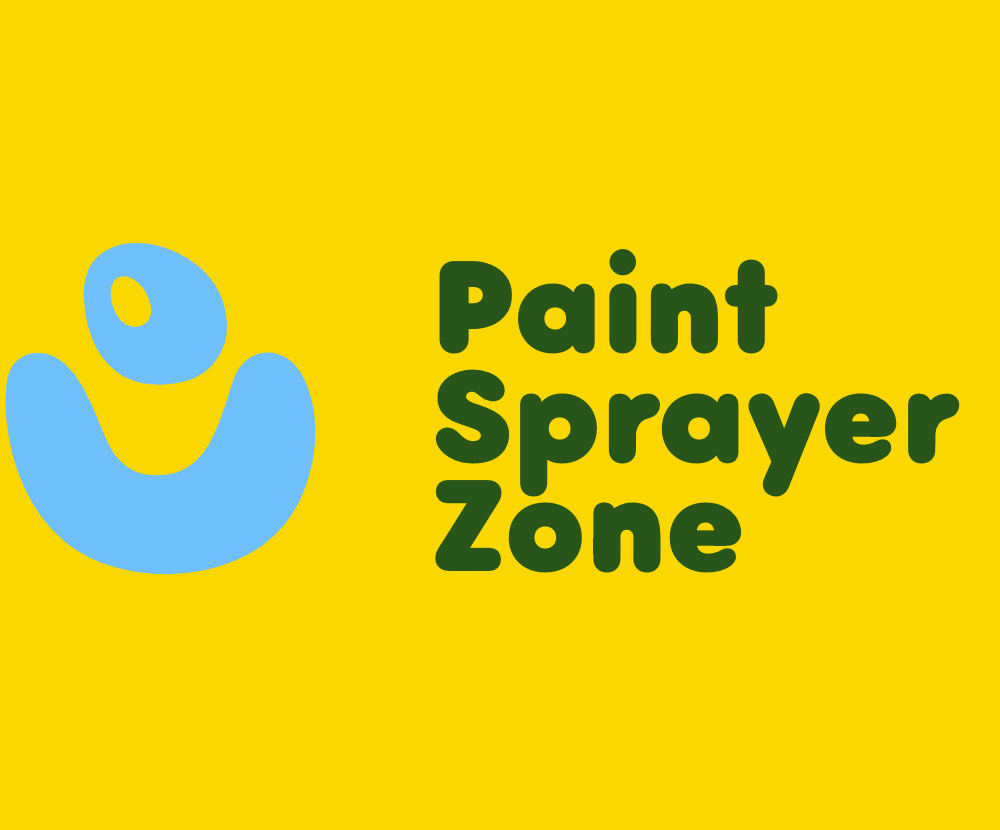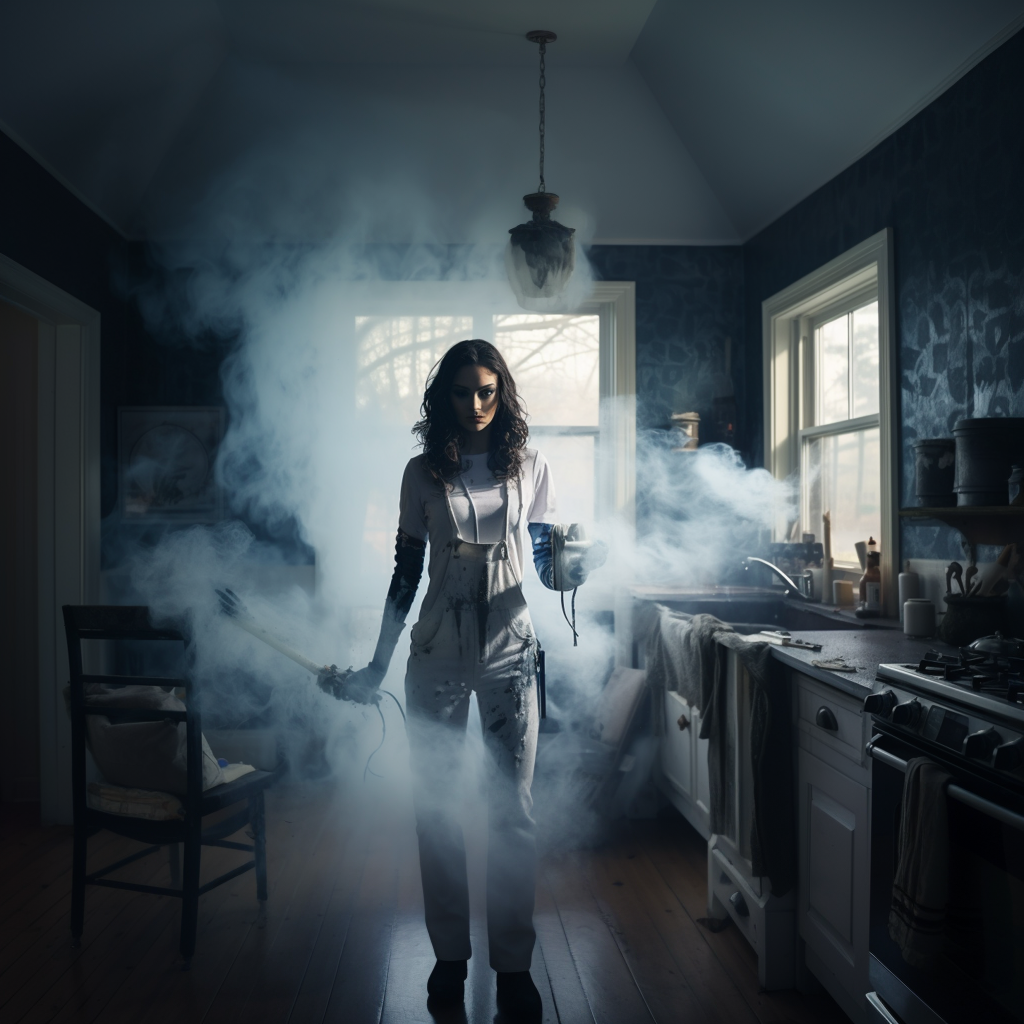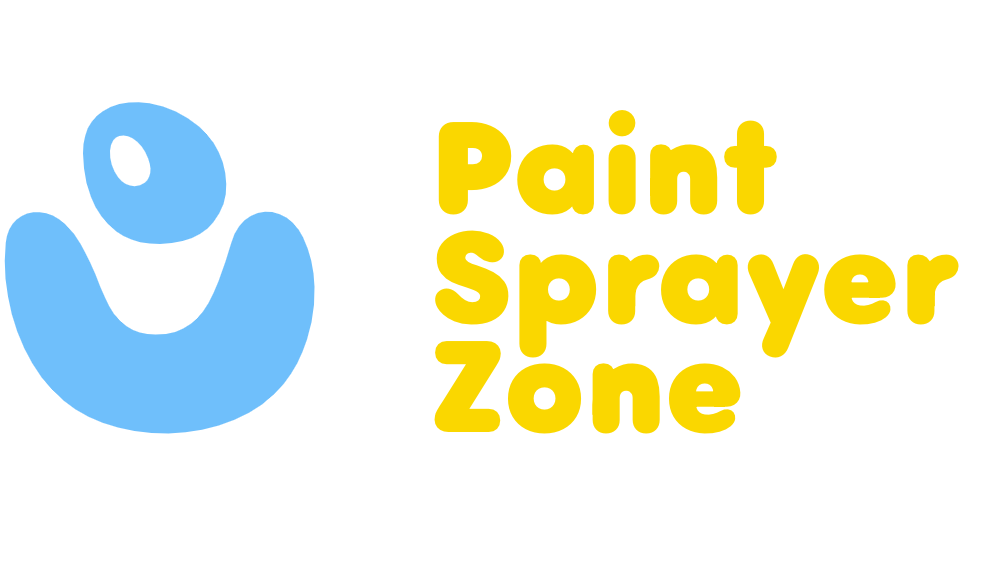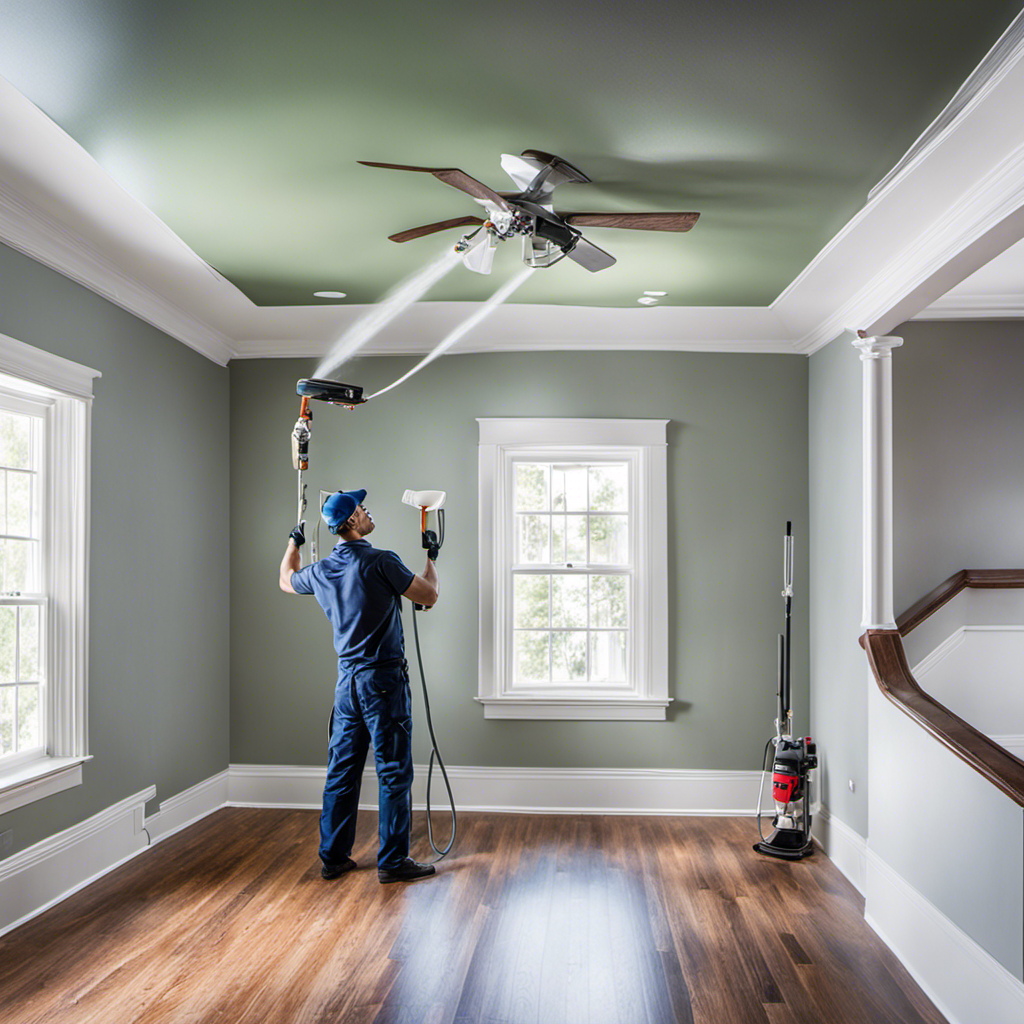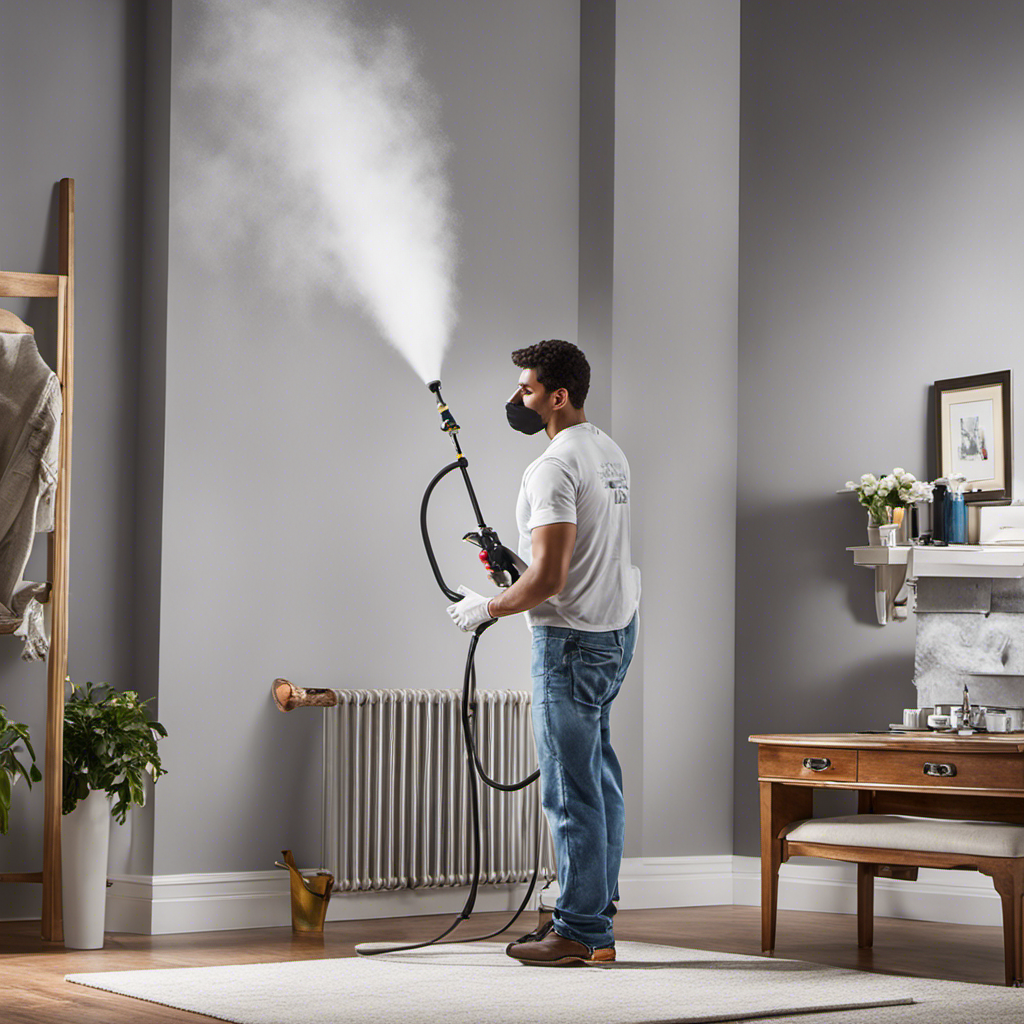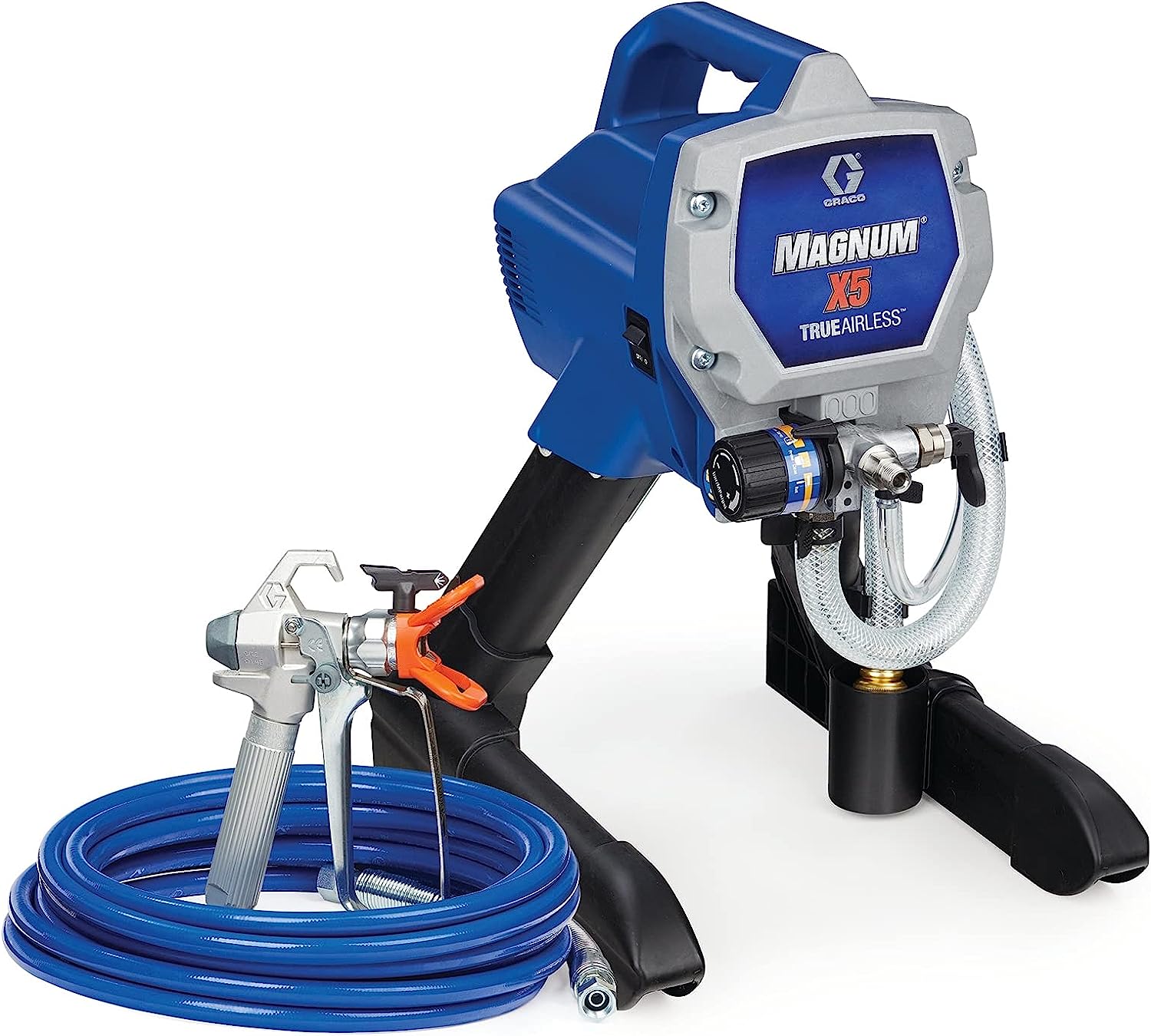Paint Sprayer Reviews & Buying Guides
Choosing Between Airless and HVLP Paint Sprayers (2023)
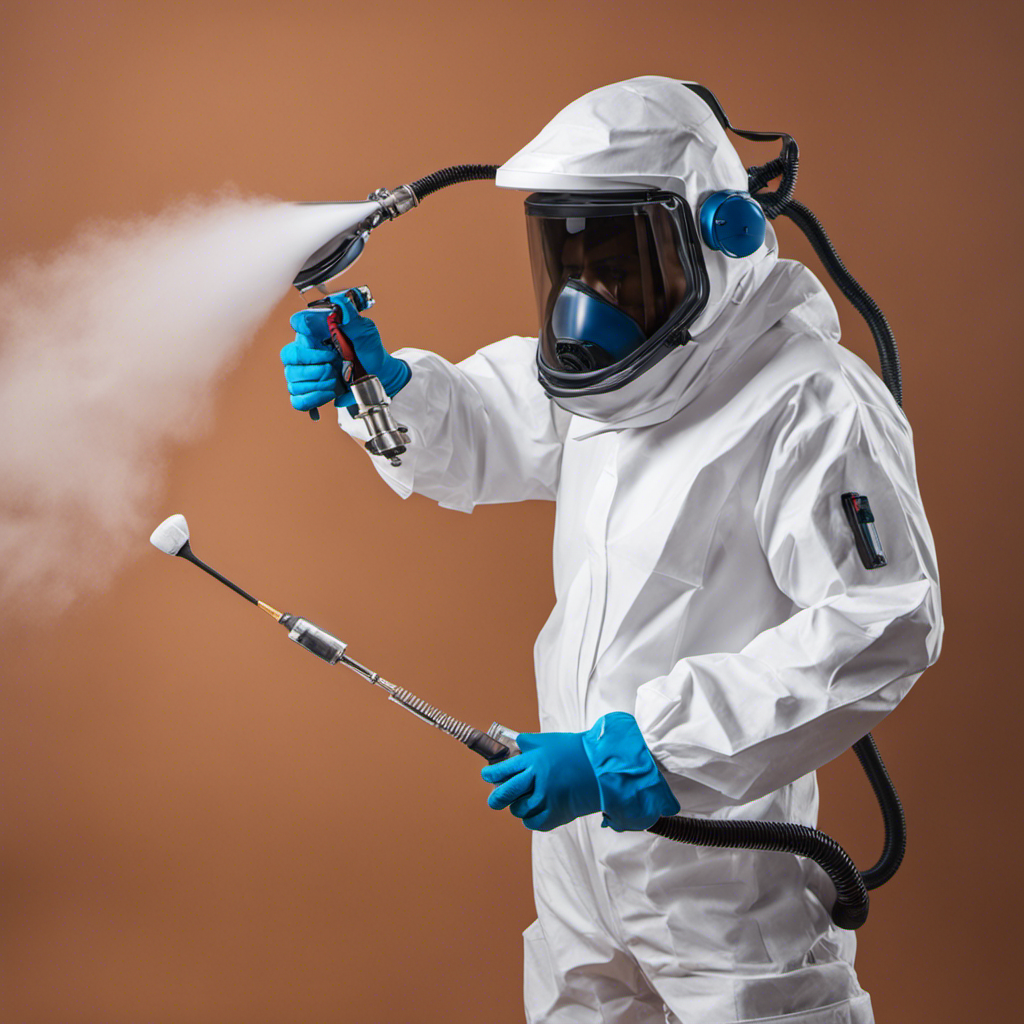
Choosing between airless and HVLP paint sprayers requires thoughtful deliberation. Each type offers its own benefits and drawbacks.
Airless sprayers are known for their fast application and excellent coverage, but they can be prone to overspray.
HVLP sprayers, on the other hand, offer versatility in spray patterns and finer finishes, but they may be slower and have a smaller paint cup capacity.
Cost, quality of finish, and ease of use are also important factors to consider.
In this article, we’ll explore the pros and cons of both types to help you make an informed decision.
Key Takeaways
- Airless paint sprayers are efficient and versatile, making them suitable for exterior painting and large-scale projects.
- HVLP sprayers provide a finer finish with reduced overspray, better control and precision, and are suitable for most painting needs.
- Airless sprayers may not be suitable for fine detail work, while HVLP sprayers excel at achieving fine detail and smooth finishes.
- Consider the specific painting needs, project size, cost, and maintenance requirements when choosing between airless and HVLP paint sprayers.
Understanding the Basics of Airless Paint Sprayers
Airless paint sprayers pump paint at high pressure to atomize it into a fine mist, making them a powerful tool for covering large areas efficiently. These sprayers can handle a wide range of paints, including latex and enamel.
To ensure optimal performance, proper maintenance is crucial. Regular cleaning and flushing are important maintenance tips to keep the sprayer in good working condition. Troubleshooting techniques may include checking for clogs in the nozzle or hose, adjusting the pressure settings, and ensuring proper paint viscosity.
Airless sprayers offer fast application and excellent coverage, but they can be prone to overspray. Despite this, their efficiency and versatility make them ideal for exterior painting and large-scale projects.
Pros and Cons of Airless Paint Sprayers
Efficient and versatile, airless paint sprayers offer fast application and excellent coverage. However, they can be prone to overspray. When considering the pros and cons of airless paint sprayers, it’s important to weigh the benefits and drawbacks.
Pros of airless paint sprayers include their efficiency and versatility, making them ideal for exterior painting and large-scale projects. They also provide excellent coverage, ensuring a consistent finish.
However, there are cons to consider as well. Overspray can be an issue, particularly when working in tight spaces or on smaller projects that require more precision. Additionally, airless sprayers may have difficulty with intricate details.
To maintain airless sprayers and optimize their performance, regular cleaning and flushing are crucial. This helps prevent clogs and ensures consistent paint flow. It’s also important to follow manufacturer guidelines for maintenance and storage.
Understanding the Basics of HVLP Sprayers
HVLP sprayers, on the other hand, utilize a large volume of air at low pressure to atomize paint into a fine mist. They offer versatility in spray patterns and textures, making them suitable for both small details and covering large surface areas. The size and shape of the spray pattern can be determined by selecting the appropriate nozzle. HVLP sprayers provide a finer finish with less overspray, making them ideal for achieving precise application and smooth finishes. They are also more efficient in material usage, offering better control and precision. While HVLP sprayers may have a slower application rate and require more frequent refills, they are generally more affordable upfront and suitable for most painting needs. In contrast, airless sprayers excel in efficiency and coverage for exterior painting and large-scale projects.
| Advantages of HVLP Sprayers |
|---|
| Finer finish with reduced overspray |
| More efficient in material usage |
| Better control and precision |
| Suitable for most painting needs |
| Generally more affordable upfront |
When considering HVLP sprayer techniques, it is important to select the appropriate nozzle size and adjust the air pressure to achieve the desired spray pattern and coverage. It is also recommended to practice proper spraying techniques, such as maintaining a consistent distance from the surface and using smooth, even strokes. Overall, HVLP sprayers offer a reliable and versatile option for achieving high-quality finishes with reduced overspray. However, it is essential to consider the specific requirements of your project and weigh the advantages of airless sprayers for larger-scale applications.
Pros and Cons of HVLP Sprayers
When considering the advantages and disadvantages of HVLP sprayers, it is important to weigh factors such as cost, application rate, and suitability for different project sizes.
HVLP sprayers offer several benefits, including a finer finish with reduced overspray, more efficient material usage, better control and precision, and suitability for most painting needs.
However, they do have some drawbacks, such as slower application rates, the need for more frequent refills, and lower paint cup capacity.
Cleaning and maintenance for HVLP sprayers are generally easier compared to airless sprayers, as they operate at a lower pressure system.
When comparing the coverage capabilities of airless and HVLP sprayers, airless sprayers provide wide and even coverage, making them ideal for large areas, while HVLP sprayers excel at providing precise application, making them perfect for intricate projects.
Comparing the Cost of Airless and HVLP Sprayers
The cost of airless and HVLP sprayers should be considered when comparing the two options for painting projects.
While airless sprayers have a higher upfront cost, they can potentially save on paint costs in the long run. Their ability to cover larger areas in less time makes them more efficient and can lead to long term savings.
On the other hand, HVLP sprayers are generally more affordable upfront and are suitable for smaller projects or detailed work. While they may require more frequent refills and have a slower application rate, they offer better control and precision.
When comparing costs, it is important to also consider the specific needs of your painting projects and the maintenance requirements.
Ultimately, the decision should be based on the desired quality of finish, portability, ease of use, and recommendations from professionals and user reviews.
Evaluating the Quality of Finish With Airless Sprayers
Airless sprayers provide wide and even coverage, making them a great choice for large areas. They excel at providing a wide and even coverage, making them ideal for painting large surfaces such as walls, fences, and exteriors. They can handle a variety of paint types, including latex and enamel, giving you the flexibility to use different coatings for different projects. Understanding the compatibility of paints is crucial to ensure optimal performance and avoid clogging or spraying issues. By comparing coverage abilities and understanding paint compatibility, you can make an informed decision about whether airless sprayers are the right choice for your specific painting needs.
Achieving Precision With HVLP Sprayers
Achieving precision with HVLP sprayers requires careful nozzle selection to determine the size and shape of the spray pattern. The spray pattern control is essential for achieving fine details in painting projects. HVLP sprayers offer versatility in spray patterns and textures, making them suitable for both small details and covering large surface areas. By selecting the appropriate nozzle, painters can achieve the desired level of precision and control over the paint application.
To help you understand the different nozzle options available for HVLP sprayers, here is a table showcasing three common nozzle sizes and their corresponding spray pattern characteristics:
| Nozzle Size | Spray Pattern | Application |
|---|---|---|
| 1.0 mm | Fine | Detail work |
| 1.4 mm | Medium | General use |
| 1.8 mm | Wide | Large areas |
Portability and Ease of Use With Airless Sprayers
When it comes to portability and ease of use, airless paint sprayers may present some challenges. These sprayers tend to be larger and bulkier compared to HVLP sprayers, making them less convenient to transport and maneuver in tight spaces.
However, despite their size, airless sprayers offer their own advantages.
Here are some key points to consider regarding paint sprayer portability and maneuverability with airless sprayers:
- Airless sprayers may be more challenging to transport and maneuver due to their larger size and bulkiness.
- Despite their size, airless sprayers can still be moved around, but it may require more effort and space.
- The benefits of airless sprayers, such as fast application and excellent coverage, can outweigh the inconvenience of their larger size.
Overall, while airless sprayers may not be as portable and maneuverable as HVLP sprayers, their efficient performance and coverage capabilities make them worth considering for larger painting projects.
Portability and Ease of Use With HVLP Sprayers
HVLP sprayers, known for their compact size and lightweight design, offer greater portability and maneuverability compared to their airless counterparts. These sprayers are designed with the user’s convenience in mind, making them easier to transport and handle in tight spaces.
The portability advantages of HVLP sprayers make them an excellent choice for DIY enthusiasts and professionals who need to move around frequently during a project. Additionally, HVLP sprayers are generally easier to clean and maintain. Their low-pressure system reduces the likelihood of clogs and allows for quicker and more efficient cleaning.
This ease of cleaning is especially beneficial when switching between different paint colors or when working on multiple projects. Overall, the portability advantages and ease of cleaning make HVLP sprayers a practical and user-friendly option for various painting needs.
Maintenance Considerations for Airless Sprayers
Regular maintenance is essential for optimal performance and longevity of airless sprayers. Neglecting maintenance can lead to common issues that can affect the overall functionality and efficiency of the sprayer. Here are some maintenance tips to keep in mind:
- Clean the sprayer thoroughly after each use to prevent clogging and ensure proper paint flow.
- Regularly inspect and replace worn or damaged parts such as seals, gaskets, and filters to prevent leaks and maintain consistent pressure.
- Flush the system with a cleaning solution or solvent to remove any residual paint or debris that may accumulate over time.
Maintenance Considerations for HVLP Sprayers
To ensure optimal performance and longevity of their HVLP sprayers, users should regularly clean and inspect the equipment. Cleaning techniques for HVLP sprayers involve removing any excess paint from the nozzle, needle, and air cap after each use. This can be done by wiping them with a clean cloth or using a cleaning solution specifically designed for paint sprayers. Troubleshooting tips for HVLP sprayers include checking for clogs or blockages in the paint cup or nozzle, ensuring proper air pressure and paint flow, and adjusting the spray pattern as needed. Regular maintenance and cleaning of HVLP sprayers will help prevent issues such as uneven spray patterns, clogging, or reduced performance. Following these cleaning techniques and troubleshooting tips will ensure that your HVLP sprayer continues to provide excellent results for all your painting projects.
| Cleaning Techniques | Troubleshooting Tips |
|---|---|
| – Remove excess paint from nozzle, needle, and air cap | – Check for clogs or blockages in paint cup or nozzle |
| – Wipe with clean cloth or use cleaning solution | – Ensure proper air pressure and paint flow |
| – Regularly inspect and clean air filter | – Adjust spray pattern as needed |
| – Clean and empty paint cup after each use | – Check for loose or damaged parts |
| – Store sprayer in a clean and dry environment | – Consult user manual for specific troubleshooting steps |
Seeking Recommendations and Reviews for Airless Sprayers
Users can gather valuable insights into the performance and reliability of airless sprayers by seeking professional recommendations and reading user reviews. By doing so, they can discover the benefits of airless sprayers. These benefits include efficient and fast application, excellent coverage, and versatility for exterior painting and large-scale projects.
However, it is important to be aware of common issues with airless sprayers. These issues include overspray and difficulty with detail work. Despite these challenges, airless sprayers are still preferred by many professionals due to their ability to cover large areas quickly and provide a smooth finish.
Seeking Recommendations and Reviews for HVLP Sprayers
When it comes to seeking recommendations and reviews for HVLP sprayers, comparing the performance and reliability of different models is essential. User experiences and professional opinions can provide valuable insights into the strengths and weaknesses of HVLP sprayers. To help with this comparison, a table is provided below:
| Model | Performance | Reliability |
|---|---|---|
| A | Excellent | High |
| B | Good | Medium |
| C | Average | Low |
| D | Poor | High |
The table displays various HVLP sprayer models and their corresponding performance and reliability ratings. Users can make informed decisions based on these ratings and choose a model that aligns with their specific painting needs. It’s important to note that user experiences and professional opinions may vary, so it’s advisable to read multiple reviews and consider the overall consensus. Ultimately, combining these recommendations and reviews with personal preferences and project requirements can lead to a well-informed decision.
Frequently Asked Questions
What Is the Average Lifespan of an Airless Paint Sprayer?
The average lifespan of an airless paint sprayer can vary depending on factors such as usage, maintenance, and quality of the sprayer.
With proper care and regular maintenance, an airless paint sprayer can last anywhere from 5 to 10 years or more.
It is important to follow the manufacturer’s maintenance tips, such as cleaning and flushing the sprayer after each use, to ensure optimal performance and extend the lifespan of the equipment.
Can HVLP Sprayers Be Used for Exterior Painting?
HVLP sprayers can be used for exterior painting, but there are some pros and cons to consider.
The benefits include the ability to achieve a finer finish with reduced overspray, better control and precision, and suitability for most painting needs.
However, HVLP sprayers have a slower application rate, require more frequent refills, and may be less suitable for larger projects.
When choosing the right paint sprayer for your exterior painting project, consider these factors along with your specific needs and budget.
Are Airless Paint Sprayers Suitable for Applying Stain or Varnish?
Airless paint sprayers are suitable for applying stain or varnish due to their ability to provide wide and even coverage. They are efficient and versatile, making them a popular choice for large-scale projects.
However, there are some cons to consider. Airless sprayers can be prone to overspray, which may not be ideal for more intricate work. Additionally, they have a higher upfront cost compared to HVLP sprayers.
Ultimately, the decision between the two will depend on the specific needs and preferences of the user.
How Long Does It Take to Clean an Airless Paint Sprayer?
Cleaning an airless paint sprayer can vary in time depending on factors such as the complexity of the equipment and the thoroughness of the cleaning process. Typically, it can take anywhere from 15 minutes to an hour to clean an airless paint sprayer thoroughly.
Maintenance requirements for airless sprayers include regular cleaning and flushing to prevent clogs and ensure optimal performance. These considerations should be taken into account when assessing the overall cost and maintenance needs of an airless paint sprayer.
Can HVLP Sprayers Handle Textured Coatings or Thick Paints?
HVLP sprayers are well-suited for handling textured coatings or thick paints. Their large volume of air at low pressure allows for efficient atomization of these types of materials. However, it is important to select the appropriate nozzle size to ensure proper application.
While airless paint sprayers offer advantages such as fast application and excellent coverage, they may not be as effective for handling thick coatings compared to HVLP sprayers.
Overall, HVLP sprayers are a better choice for achieving precise and detailed finishes with textured coatings or thick paints.
Conclusion
In conclusion, when it comes to choosing between airless and HVLP paint sprayers, it is important to consider the specific needs of the project.
While airless sprayers offer fast application and excellent coverage, HVLP sprayers provide versatility and finer finishes.
Both options have their pros and cons, and the decision should be based on factors such as project size, budget, and desired finish quality.
Seeking recommendations and reading user reviews can help in making an informed choice.
Ultimately, finding the perfect paint sprayer is like finding a unicorn – a rare and magical tool that can bring any surface to life with a stroke of brilliance.
Drenched in creativity and armed with a fountain pen, Isolde weaves words as gracefully as a painter strokes their canvas. A writer for Paint Sprayer Zone, her passion for colors, textures, and spaces finds a harmonious blend with her profound knowledge of painting tools and techniques.
Having grown up in a family of artists, Isolde’s tryst with paints began early. While her relatives expressed themselves on canvas, Isolde found her medium in words. She dedicated herself to chronicling the world of painting, understanding the nuances of each tool, and the artistry behind every spritz of a paint sprayer.
Paint Sprayer Reviews & Buying Guides
MJF Cordless Paint Sprayer Review: 2 * 20V 2.0Ah Batteries, 4 Nozzles, 3 Patterns, 1000ml Container (2023)

Today, I am thrilled to discuss the MJF Cordless Paint Sprayer. Being a fan of DIY projects, I was eagerly looking forward to testing out this portable paint sprayer. I will go over its advantages, disadvantages, and provide a brief overview.

Pros and Cons
What We Liked
- Cordless & lightweight: The MJF Cordless Paint Sprayer is powered by a 20V lithium-ion battery, providing the freedom to work without being tethered to an AC power cord. It’s lightweight, making it comfortable to use for extended periods.
- Two Large Capacity Battery: With two high-quality 2000mAh lithium batteries, you can operate this paint sprayer continuously for approximately 30-45 minutes on each battery. Plus, the seamless switching between batteries ensures uninterrupted painting sessions.
- 4 Nozzles & 3 Spray Patterns: The sprayer comes with four copper nozzles that are adjustable to three different spray patterns: horizontal, vertical, and circular. This versatility makes it suitable for various projects, including furniture, cars, fences, and interior walls.
- Easy to Clean & Simple to Use: It’s effortless to assemble and disassemble this sprayer without the need for any tools, making cleaning a breeze. The included cleaning brush and needle tube help remove any paint residue, and the viscosity cup ensures perfect paint consistency.
- Package Contents: The package includes everything you need to get started, including the paint sprayer, two 2000mAH lithium batteries, a charger, a 1000ml paint container, four different size nozzles, a viscosity cup, a cleaning brush, a cleaning needle, and a user manual.
What Can Be Improved
- Battery life: Some users have reported that the batteries don’t last as long as expected, especially when using the sprayer at full power. It may be beneficial to have longer-lasting batteries included or the option to purchase higher-capacity ones separately.
- Not suitable for thick paint: While the sprayer works well for most projects, it may struggle with thick or high-viscosity paints. Thinning the paint or opting for a larger nozzle size can help overcome this issue.
Quick Verdict
Overall, the MJF Cordless Paint Sprayer is a reliable and convenient tool for small to medium painting projects. It offers the freedom of cordless operation and comes with a variety of nozzles and spray patterns for versatility. Although the battery life may not be ideal for long, intense painting sessions, it’s suitable for most DIY enthusiasts. The ease of use and the included cleaning tools make it hassle-free to maintain. If you’re looking for a budget-friendly paint sprayer that gets the job done, the MJF Cordless Paint Sprayer is worth considering.
You can find the MJF Cordless Paint Sprayer on Amazon and take your DIY projects to the next level!
Unboxing – What’s Inside?
As a home improvement enthusiast, I recently purchased the MJF Cordless Paint Sprayer from Amazon. Being in the USA, I was able to take advantage of fast delivery and received the product within a few days of placing my order.
Upon unboxing the product, I found the following items inside:
- 2 * 20V 2.0Ah Batteries: The paint sprayer comes with two powerful batteries that provide cordless convenience and allow for uninterrupted painting sessions.
- 4 Copper Nozzles: Included in the package are four copper nozzles, each designed for different painting applications. These nozzles ensure precision and consistent paint flow.
- 1000ml Container: The paint sprayer features a spacious container that holds up to 1000ml of paint, reducing the need for frequent refills and enabling efficient painting.
- HVLP Paint Sprayer for Home Interior and Exterior: The MJF Cordless Paint Sprayer is specifically designed for both indoor and outdoor painting projects, offering versatility in its usage.
- Handheld Paint Spray Gun: The paint sprayer is compact and lightweight, providing ease of use and comfortable grip during extended painting tasks.
Specifications
Here are the specifications of the MJF Cordless Paint Sprayer:
- Manufacturer: MJF
- Item Weight: 5.02 pounds
- Product Dimensions: 12.6 x 4.3 x 12.6 inches
- Model Name: 3M10
- Special Feature: Low Pressure, High Volume, Lightweight
- Power Source: Battery Powered
- Style: Handheld
- Material: Copper
- Color: Orange
- Brand: MJF
Documentation/User Guide
The provided documentation and user guide for the MJF Cordless Paint Sprayer proved to be incredibly helpful. It provided clear instructions on how to assemble and operate the sprayer, ensuring a smooth painting experience. Additionally, it offered valuable tips and techniques for achieving professional-looking results. You can find the user guide here.
Features – What We Found
Cordless & Lightweight
The MJF Cordless Paint Sprayer is designed to provide convenience and freedom during your DIY painting projects. Powered by a 20V lithium-ion battery, this paint sprayer allows you to work without the restrictions of an AC power cord. Its lightweight design makes it easy to maneuver and use for extended periods without fatigue. You can now tackle painting tasks anywhere in your home or even outdoors without having to worry about finding a power source.
Pro-tip: When using a cordless paint sprayer, ensure that you fully charge the batteries before starting your project. It’s also advisable to have spare batteries charging while you work to minimize interruptions.
Two Large Capacity Batteries
The MJF Cordless Paint Sprayer comes with two high-quality 2000mAh lithium batteries. Each battery provides approximately 30-45 minutes of continuous operation, allowing you to paint for longer periods without the need for constant recharging. While one battery is in use, the other can be charging, ensuring seamless switching without any interruptions due to low battery life. This feature is especially useful for larger painting projects where a single battery may not be sufficient to complete the task.
Pro-tip: To maximize battery life, make sure to fully discharge and recharge the batteries periodically. This practice helps maintain their overall performance and extends their lifespan.
Click here to check the product on Amazon.
4 Nozzles & 3 Spray Patterns
The MJF Cordless Paint Sprayer includes four copper nozzles and offers three different spray patterns: horizontal, vertical, and circular. The pre-installed 1.8mm blue nozzle is ideal for most painting projects, while the additional three nozzles (1.0mm, 1.5mm, 2.5mm) allow for greater versatility and customization. This paint sprayer is perfect for various lightweight projects such as furniture, cars, fences, and interior walls. The anti-backflow design prevents liquid from flowing back, ensuring a smooth and uninterrupted painting experience.
Pro-tip: Experiment with different nozzle sizes and spray patterns to achieve the desired finish and coverage. Practice on a scrap surface before starting the actual painting.
Easy to Clean & Simple to Use
The MJF Cordless Paint Sprayer is designed for ease of use and maintenance. It can be easily assembled and disassembled without the need for any tools, making cleaning a breeze. The package includes a cleaning brush and needle tube, allowing you to remove any hardened paint that may be left in the nozzle. Additionally, a viscosity cup is provided to help you ensure the perfect paint viscosity. If the paint passes through the cup within the recommended time span, it means that it does not need to be thinned.
Pro-tip: After each use, thoroughly clean the paint sprayer to prevent clogging and ensure optimal performance in future painting projects. Follow the instructions in the user manual for proper cleaning and maintenance.
Package Contents and Warranty
The MJF Cordless Paint Sprayer package includes the paint sprayer itself, two 2000mAh lithium batteries, a charger, a 1000ml paint container, four different size nozzles, a viscosity cup, a cleaning brush, a cleaning needle, and a user manual. The comprehensive package provides everything you need to start your painting projects right away. Additionally, the product comes with a 12-month warranty and free return or exchange service, giving you peace of mind and confidence in your purchase.
Click here to check the product on Amazon.
Our Review
Our Score: 69.0
I recently purchased the MJF Cordless Paint Sprayer and I must say, it has been a great addition to my DIY projects. The cordless and lightweight design has made it incredibly convenient to use, allowing me to work without being tethered to an AC power cord. The 20V lithium-ion battery provides ample power and I can easily spray about 170 square feet in just 10 minutes. This has saved me a lot of time on my painting projects. The maximum viscosity of 50 DIN/sec ensures smooth and even spray coverage.
The two large capacity batteries that come with this paint sprayer are a game-changer. I can operate the sprayer continuously for about 30-45 minutes on each battery. While one is in use, I can charge the other, ensuring uninterrupted work. The four nozzles and three spray patterns have been incredibly versatile for various projects. Whether I am working on furniture, cars, fences, interior walls, or garage doors, the MJF paint sprayer delivers excellent results. The anti-backflow design is also a great feature as it prevents any liquid from flowing back, allowing me to work freely.
The ease of cleaning and use of the paint sprayer is a major plus point. It can be easily assembled and disassembled without any tools, making cleaning a breeze. The included cleaning brush and needle tube make it easy to remove any hardened paint from the nozzle. The viscosity cup ensures perfect paint viscosity and eliminates the need for thinning. Overall, I am extremely satisfied with the MJF Cordless Paint Sprayer and highly recommend it for anyone looking for a convenient and reliable paint sprayer for their DIY projects.
Click here to check the product out on Amazon.
Other Options To Consider
In case the MJF Cordless Paint Sprayer didn’t quite meet your needs, here are some alternate products that you should consider:
-
MJF Cordless Paint Sprayer: This paint sprayer offers the convenience of cordless operation, allowing you to freely move around without the hassle of tangled wires. With its two 20V 2.0Ah batteries, you can expect long-lasting performance for your painting projects. It includes four copper nozzles and three patterns, giving you versatility in achieving different spray effects. The 1000ml container ensures that you can cover a large area without frequent refills. Whether it’s for home interiors or exteriors, this handheld paint spray gun is a reliable choice. Check it out here.
-
Cordless Paint Sprayer for DEWALT 20V Max Battery: If you already own DEWALT 20V Max batteries, this paint sprayer is a great option. It provides the convenience of cordless operation and is compatible with DEWALT 20V Max batteries (battery not included). With its HVLP electric tools spray paint gun, you can achieve professional-looking results on various surfaces including furniture, cabinets, walls, fences, and ceilings. The easy-to-use design makes it suitable for both beginners and experienced painters. Check it out here.
-
ETOOlAB Cordless Paint Sprayer: This innovative paint sprayer is a great alternative to traditional paint rollers. With its quick and even spray paint application, you can achieve a smooth surface without brush marks. It comes with a 20V 3000mAh battery for long-lasting performance. Whether you’re painting your house, furniture, fence, wall, or door, this paint gun is designed to make your DIY projects easier and more efficient. Check it out here.
-
LDHTHOPI Cordless Paint Sprayer: If you’re looking for a paint sprayer with a larger paint capacity, this model is worth considering. Its 1200ml paint container allows you to cover more area without frequent refills. It comes with two 1500mAh batteries for extended painting sessions. The five copper nozzles and three spray patterns provide versatility in achieving different paint finishes. From walls and fences to metal and floors, this paint sprayer is suitable for various DIY projects. Check it out here.
-
PROSTORMER Cordless Paint Sprayer: This brushless power paint and HVLP spray gun offers three spray patterns and a 1200ml detachable container for easy cleaning and refilling. It’s designed to make home painting a breeze, whether you’re a seasoned DIY enthusiast or a beginner. With its user-friendly features, you can achieve professional-looking results without the hassle. If you’re looking for a reliable and easy-to-use paint sprayer, this is a great alternative to consider. Check it out here.
Each of these alternative paint sprayers offers unique features and advantages that may better suit your specific needs. Take some time to explore their specifications and customer reviews to make an informed decision. Happy painting!
Drenched in creativity and armed with a fountain pen, Isolde weaves words as gracefully as a painter strokes their canvas. A writer for Paint Sprayer Zone, her passion for colors, textures, and spaces finds a harmonious blend with her profound knowledge of painting tools and techniques.
Having grown up in a family of artists, Isolde’s tryst with paints began early. While her relatives expressed themselves on canvas, Isolde found her medium in words. She dedicated herself to chronicling the world of painting, understanding the nuances of each tool, and the artistry behind every spritz of a paint sprayer.
Paint Sprayer Reviews & Buying Guides
Airless Paint Sprayer Extension Pole Review (2023)

Hello! I had the chance to test out the 4 PCS Airless Paint Sprayer Extension Pole, and I can’t wait to tell you all about it. This extension pole is made for airless paint sprayers, providing extra reach and flexibility for your painting jobs. It comes in three different lengths (8 inches, 12 inches, and 15 inches) and includes a red guard for added safety, making it great for a variety of painting projects.

Pros and Cons
What We Liked
- The extension pole allows for easy maneuverability and reaching high or hard-to-reach areas.
- The red guard provides added protection, reducing the risk of paint overspray.
- The different sizes available allow for flexibility in various painting projects.
- The extension pole is easy to attach and detach from the airless paint sprayer.
- The pole is lightweight and durable, making it comfortable to use for extended periods of time.
What Can Be Improved
- The glue on the surface of the extension pole can be messy and may require cleaning before use.
- The pole may not securely fasten to the sprayer adapter, leading to potential movement and adjustment issues during use.
Quick Verdict
Overall, the 4 PCS Airless Paint Sprayer Extension Pole offers an added dimension of convenience and flexibility for your painting projects. With its lightweight design, easy attachment, and three different size options, this extension pole makes it easier to reach high and difficult areas without straining yourself. However, the glue on the pole’s surface and potential issues with secure attachment are areas for improvement. If you’re looking for a versatile and user-friendly extension pole for your airless paint sprayer, give this one a try!
You can find more information about the product and make a purchase online on Amazon.
Unboxing – What’s Inside?
As a resident of the USA, I recently purchased the 4 PCS Airless Paint Sprayer Extension Pole, 3 Size Airless Sprayer Paint Extension Pole Wand with Red Guard 8 Inches, 2 PCS x 12 Inches, 15 Inches 8in&12in&15in from Amazon. I was in need of a reliable extension pole set for my painting projects. The delivery was surprisingly fast, and I received the package within two days.
Upon unboxing the product, I found the following items inside the box:
- 4 PCS Airless Paint Sprayer Extension Poles
- 3 Size Airless Sprayer Paint Extension Poles: 8 Inches, 2 PCS x 12 Inches, 15 Inches
- Red Guard
Specifications
– Manufacturer: KEJJNYER
– Item Weight: 13.1 ounces
– Product Dimensions: 5.91 x 0.2 x 0.2 inches
– Model Name: Extension Pole Set
– Special Feature: Lightweight, Airless
– Power Source: No
– Item Dimensions LxWxH: 5.91 x 0.2 x 0.2 inches
– Material: Aluminum
– Color: Red
– Brand: KEJJNYER
User-Guide
The product came with an empty user guide, so unfortunately, I cannot comment on the documentation it provides. However, I would have appreciated a detailed user guide to assist me in using the extension pole set effectively.
If you would like to check the user guide when it becomes available, you can find it here.
Features – What We Found
Durable Airless Paint Sprayer Extension Pole
The 4 PCS Airless Paint Sprayer Extension Pole is made of high-quality materials, ensuring its durability and longevity. The extension pole is designed to withstand the rigors of painting tasks and can handle various types of paints without breaking or bending. This makes it a reliable tool for both professional painters and DIY enthusiasts.
The extension pole is also lightweight, making it easy to handle and maneuver during painting projects. Its ergonomic design provides comfort and reduces fatigue, allowing for extended use without strain. Moreover, the pole is equipped with a red guard, which adds an additional layer of protection and prevents accidental paint splatters.
Pro-tip: To maximize the lifespan of the airless paint sprayer extension pole, it is recommended to clean it thoroughly after each use. This will remove any paint residue and prevent clogging or damage to the pole.
Versatile 3 Size Options
The 4 PCS Airless Paint Sprayer Extension Pole comes in three different sizes: 8 inches, 12 inches (2 PCS), and 15 inches. This range of options allows for flexibility in various painting projects, whether it’s reaching high ceilings, walls, or tight corners. With these different lengths, you can easily customize the extension pole to suit your specific needs.
Click here to check out the product on Amazon.
Glue Surface for Easy Use
The airless paint sprayer extension pole has a glue surface, which ensures a secure connection between the pole and the paint sprayer. This surface feature allows for easy and quick attachment, saving time and effort during setup. The glue surface also provides a tight seal, preventing any paint leaks or drips.
When attaching the extension pole, simply align the connectors and press them together firmly. The glue surface will create a sturdy bond, ensuring that the pole stays securely in place throughout the painting process.
Lightweight and Ergonomic Design
The airless paint sprayer extension pole is designed to be lightweight and ergonomic, making it comfortable to hold and easy to maneuver. This design allows for precise control and reduces fatigue during extended painting sessions. The lightweight nature of the pole also minimizes strain on the arm and wrist, allowing for prolonged use without discomfort.
Pro-tip: While using the extension pole, it is advised to maintain a relaxed grip and use smooth, controlled movements. This will ensure a steady and even application of paint, resulting in a professional-looking finish.
Optimal Paint Coverage
The 4 PCS Airless Paint Sprayer Extension Pole is specifically designed to provide optimal paint coverage. The length and design of the pole allow for reaching high or inaccessible areas, ensuring consistent and uniform paint distribution. This feature is particularly useful when painting ceilings, walls, or large surfaces, as it saves time and effort by reducing the need for ladders or scaffolding.
The extension pole also enables painters to easily control the paint flow and adjust the spray pattern, resulting in a smooth and flawless finish. The combination of the pole’s length and its compatibility with airless paint sprayers makes it a versatile tool for achieving professional-quality results.
Our Review and Score
Our Score: 77.0
I recently purchased the 4 PCS Airless Paint Sprayer Extension Pole and I have to say, it has been a great addition to my painting toolkit. The three different size options (8 inches, 12 inches, and 15 inches) provide versatility for various painting projects. The red guard also helps to protect surfaces from overspray, which is a nice bonus.
The glue on the surface of the extension pole was initially concerning, but after reading the product information, I realized it was not a product defect. It does not affect the functionality of the pole and does not interfere with its use. I have been able to use it without any issues.
One reviewer mentioned that the adapter does not tighten properly and tends to loosen with strong movements. While I have not experienced this issue, it is something to keep in mind. Overall, I have found this extension pole to be sturdy and reliable, making my painting projects much easier and more efficient.
If you’re in need of a reliable and versatile extension pole for your airless paint sprayer, I highly recommend the 4 PCS Airless Paint Sprayer Extension Pole. It has made a noticeable difference in the quality of my paint jobs and I’m sure it will do the same for you. You can find more information about the product here.
Best combination
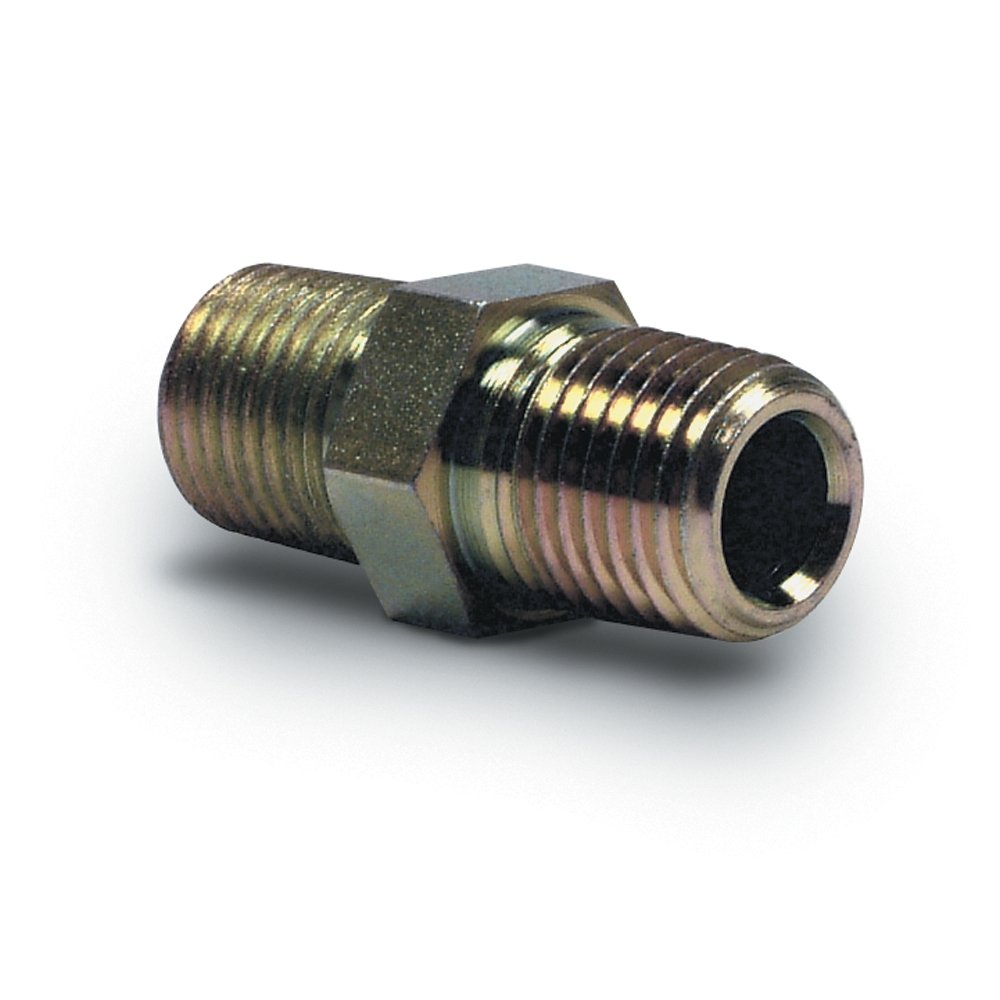
If you’re in need of an alternative product to go along with your airless paint sprayer, I highly suggest considering the 4 PCS Airless Paint Sprayer Extension Pole. This extension pole comes in three different sizes – 8 inches, 12 inches, and 15 inches – and includes a red guard for added safety.
Adding this extension pole to your paint sprayer setup provides numerous benefits. Firstly, it allows you to reach higher areas with ease, eliminating the need for ladders or scaffolding. Whether you’re painting walls, ceilings, or even outdoor surfaces, this extension pole ensures that no spot is left untouched.
Moreover, the extension pole is designed to be compatible with most airless paint sprayers, including the one you’ve just purchased. Its durable construction guarantees long-lasting performance, enabling you to use it for multiple projects.
Investing in this alternate product enhances the versatility and efficiency of your airless paint sprayer. With the ability to reach higher, you’ll complete painting tasks faster and achieve professional-quality results.
Don’t miss out on the opportunity to upgrade your paint sprayer setup. Consider purchasing the 4 PCS Airless Paint Sprayer Extension Pole today and enjoy effortless painting experiences.
For more details, check the 4 PCS Airless Paint Sprayer Extension Pole on Amazon.
Still not sold? Checkout These Alternatives
Looking for some alternative options to the 4 PCS Airless Paint Sprayer Extension Pole? Here are some similar products that you might find interesting:
-
4 PCS Airless Paint Sprayer Extension Pole, 3 Size Airless Sprayer Paint Extension Pole Wand with Red Guard 8 Inches, 2 PCS x 12 Inches, 15 Inches
If you’re considering the 4 PCS Airless Paint Sprayer Extension Pole, you might also want to check out the 4 PCS Airless Paint Sprayer Extension Pole with Red Guard. This set includes three different sizes – 8 inches, 12 inches, and 15 inches, offering you more flexibility and reach during your painting projects. The red guard protects against paint overspray, ensuring a cleaner and more efficient painting experience. With four poles in the set, you’ll have multiple options to choose from depending on your painting needs. -
3 Packs Airless Paint Sprayer Extension, 3 Size Paint Sprayer Extension Wand with Red Guard, Paint Sprayer Extension Pole for Airless Sprayers (8 inch / 12 inch / 15 inch)
Another great alternative is the 3 Packs Airless Paint Sprayer Extension. This set also comes with three different size options – 8 inches, 12 inches, and 15 inches – allowing you to choose the perfect extension pole length for your painting project. The included red guard provides protection against paint overspray, ensuring a clean and professional finish. With three extension poles in the pack, you’ll have the versatility you need for all your painting needs. -
Jewboer Extension Pole for Airless Paint Sprayer Guns Spray Painting Wand 29.5-Inch
If you’re looking for a longer extension pole option, you might want to consider the Jewboer Extension Pole for Airless Paint Sprayer Guns Spray Painting Wand. With a length of 29.5 inches, this extension pole is perfect for reaching high or hard-to-access areas. It is compatible with airless paint sprayer guns, making it a versatile tool for your painting projects. The sturdy construction ensures durability, while the comfortable grip handle provides ease of use. -
JWGJW 120025 Spray Guide Accessory Tool for All Airless Paint Sprayer 7/8 w/ 517 Tip with 10 Inch Extension Pole
For a spray guide accessory tool option, the JWGJW 120025 Spray Guide Accessory Tool is worth considering. This tool is compatible with all airless paint sprayers and comes with a 10-inch extension pole. It features a 7/8 tip size 517, which provides accurate and consistent spray patterns. The spray guide accessory helps you achieve clean and precise lines, making it ideal for projects that require sharp edges or intricate designs. -
Graco 243041 Magnum 15-Inch Tip Extension, Gray
For a trusted brand option, the Graco 243041 Magnum 15-Inch Tip Extension is a great choice. This extension pole is designed for use with Graco airless paint sprayers and features a 15-inch length. It allows you to reach higher areas and ceilings with ease, making your painting projects more efficient. The high-quality construction ensures durability, and the gray color gives it a sleek and professional look.
With these alternative options, you can find the perfect extension pole that suits your painting needs. Whether you’re looking for different size options, a longer reach, specific compatibility, or a trusted brand, these alternatives have got you covered. So, why not give them a try?
Drenched in creativity and armed with a fountain pen, Isolde weaves words as gracefully as a painter strokes their canvas. A writer for Paint Sprayer Zone, her passion for colors, textures, and spaces finds a harmonious blend with her profound knowledge of painting tools and techniques.
Having grown up in a family of artists, Isolde’s tryst with paints began early. While her relatives expressed themselves on canvas, Isolde found her medium in words. She dedicated herself to chronicling the world of painting, understanding the nuances of each tool, and the artistry behind every spritz of a paint sprayer.
Paint Sprayer Reviews & Buying Guides
Graco Paint Sprayer Suction Tube Set: Review (2023)

Today, I will discuss my opinions on the Graco Paint Sprayer Heavy Duty Suction Tube Set. Being someone who regularly engages in painting projects, I was searching for a dependable replacement for my old suction tube set. After conducting some research, I came across this Graco product and chose to try it out.

Pros and Cons
What We Liked
- Top-Notch Performance: Replacing my worn suction tube set with this one has significantly improved the overall performance of my sprayer. It no longer leaks or suffers from reduced pressure due to paint build-up.
- High Flexibility: The suction tube’s high flexibility allows it to handle a wide variety of materials, making it suitable for different paint projects.
- Durability: This Graco suction tube set is made from quality materials, ensuring longevity. It’s also resistant to brittleness, even after prolonged use.
- Compatibility: Whether I’m using water or mineral spirits, this suction tube set is compatible with both, eliminating the need for multiple sets.
- Genuine Graco Part: As an original Graco part, I can vouch for its exceptional quality and perfect fit for any Graco sprayer. Plus, there are helpful markers on the hose to cut it to the optimal size for each sprayer.
What Can Be Improved
- Limited Reviews: While the available reviews are positive, I would have appreciated a more extensive range of customer feedback.
- Price: The price of this product is slightly higher compared to other suction tube sets on the market. However, considering its quality and performance, it’s a worthwhile investment.
Quick Verdict
In conclusion, the Graco Paint Sprayer Heavy Duty Suction Tube Set is an outstanding replacement set that delivers top-notch performance. Its high flexibility, durability, and compatibility make it a must-have tool for any paint enthusiast or professional. The genuine Graco part ensures a perfect fit for various Graco sprayers, and the included markers on the hose simplify the installation process. Although the price may be slightly higher, the long-lasting quality and enhanced sprayer performance justify the investment.
If you’re looking to maintain the top performance of your paint sprayer while eliminating leaks and paint build-up, I highly recommend checking out the Graco Paint Sprayer Heavy Duty Suction Tube Set. You can find more information and purchase it here.
Unboxing – What’s Inside?
I recently purchased the Graco Paint Sprayer Heavy Duty Suction Tube Set on Amazon. Living in the USA, I was able to order it conveniently and it arrived at my doorstep within a few days. The delivery was surprisingly fast and hassle-free.
When I opened the box, I found the following items:
- Empty: The box itself did not contain anything other than the product and its packaging.
Specifications
Here are the specifications of the Graco Paint Sprayer Heavy Duty Suction Tube Set:
- Brand: Graco
- Manufacturer: Graco
- Item Package Quantity: 1
- Style: Heavy Duty
- Is Discontinued By Manufacturer: No
- Item model number: 24V073
- Package Dimensions: 20.08 x 4.76 x 2.17 inches
- Item Weight: 8.1 ounces
- Part Number: 24V073
- Date First Available: December 6, 2015
- Batteries Required: No
- Batteries Included: No
Documentations
The documentation that came with the Graco Paint Sprayer Heavy Duty Suction Tube Set was very helpful. It provided clear instructions on how to assemble and use the suction tube set. The user guide also included useful tips and maintenance guidelines to ensure optimal performance. You can find the complete user guide here.
Features – What We Found
1. Replace when hose is brittle and accumulated with paint to maintain top performance
This feature allows users to easily replace the suction tube set when the hose becomes brittle and accumulates paint, ensuring that the paint sprayer maintains top performance. Over time, the suction tube can deteriorate due to exposure to paint and other chemicals. When this happens, it can lead to leaks, potential cracks, and a build-up of paint that reduces the sprayer’s pressure and effectiveness.
By regularly monitoring the condition of the suction tube and replacing it when necessary, users can ensure that their paint sprayer continues to work optimally. This feature not only prolongs the lifespan of the sprayer but also ensures consistent and efficient paint application.
Pro-tip: It’s recommended to regularly inspect the suction tube for signs of wear and tear, such as brittleness or paint buildup. By proactively replacing the suction tube when needed, you can avoid potential issues and maintain the performance of your paint sprayer.
2. Replacing a worn suction tube set eliminates leaks, potential cracks, and paint build-up that reduces sprayer pressure
Replacing a worn suction tube set is crucial to prevent leaks, potential cracks, and paint build-up that can significantly reduce the sprayer’s pressure. As the suction tube ages, it may develop small cracks and leaks, causing paint to escape and compromising the sprayer’s performance.
By replacing the worn suction tube set, users can eliminate these issues and ensure that the paint sprayer maintains optimal pressure. The new tube set provides a secure and tight connection, preventing any potential leakage or loss of paint during the spraying process. This feature not only enhances the efficiency of the paint sprayer but also saves time and prevents unnecessary mess.
For easy replacement of the worn suction tube set, you can find the compatible Graco Paint Sprayer Heavy Duty Suction Tube Set here.
3. High flexibility suction tube handles a wide variety of materials
This product’s suction tube offers high flexibility, allowing it to handle a wide range of materials. Whether you’re working with water-based paints or mineral spirits, this suction tube can accommodate them all.
The high flexibility of the suction tube ensures that it can bend and maneuver without sacrificing durability or functionality. This feature is particularly beneficial when dealing with different types of projects that require the use of various materials. Whether you’re painting walls, furniture, or other surfaces, this suction tube can easily adapt to the material being sprayed.
The high flexibility of the suction tube also contributes to a smoother and more efficient paint application process, as it can easily navigate tight corners, angles, and uneven surfaces.
4. Compatible with water and mineral spirits
This suction tube set is compatible with both water-based paints and mineral spirits. This versatility allows users to work with different types of paints and solvents, depending on the specific project requirements.
Whether you’re using water-based paints for indoor applications or mineral spirits for tougher tasks, this suction tube set can handle it all. The compatibility with both types of materials ensures that you have the flexibility to work on a wide range of projects without needing multiple suction tube sets.
Pro-tip: Always ensure you clean the suction tube thoroughly after each use, especially when switching between water-based paints and mineral spirits. This will prevent any residue or cross-contamination that could affect future paint applications.
5. Wide range of product_link for easy replacement
This product offers a wide range of product links for easy replacement when needed. This allows users to conveniently purchase the compatible Graco Paint Sprayer Heavy Duty Suction Tube Set when it’s time to replace the worn or damaged tube set.
By providing a direct link to the product, users can quickly and easily acquire the replacement suction tube set without any hassle. This feature saves valuable time and ensures that users can continue their painting projects without any interruptions caused by worn or damaged parts.
Having easy access to the replacement product_link also ensures that users can rely on genuine, high-quality Graco components, thus guaranteeing the continued performance and reliability of their paint sprayer.
Our Review and More
Our Score: 93.0
I recently purchased the Graco Paint Sprayer Heavy Duty Suction Tube Set and I must say, it has been a game changer for me. As someone who frequently works on home improvement projects, having a reliable paint sprayer is a must. This suction tube set has exceeded my expectations in terms of performance and durability.
The main reason why I love this product is because of its high flexibility suction tube. It can handle a wide variety of materials, including water and mineral spirits. This versatility has made my painting process much more efficient as I no longer have to switch between different equipment for different materials.
Additionally, the suction tube set is very easy to replace when needed. When the hose becomes brittle or accumulated with paint, it can be replaced without any hassle. This ensures that the paint sprayer maintains its top performance, eliminating any leaks, potential cracks, or paint build-up that could reduce sprayer pressure.
I highly recommend the Graco Paint Sprayer Heavy Duty Suction Tube Set to anyone in need of a reliable and versatile tool for their painting projects. It has definitely made a significant difference in my work, and I’m sure it will do the same for others. You can find more information about the product here.
Other Options To Consider
When it comes to heavy-duty paint sprayers, the Graco Paint Sprayer Heavy Duty Suction Tube Set is often the go-to choice for many people. However, if you’re looking for some alternatives that can provide similar functionality and quality, here are a few options to consider:
- Graco 288749 60-Mesh SG2/SG3 Airless Spray Gun Filter: This spray gun filter is a great alternative to the Graco Paint Sprayer Heavy Duty Suction Tube Set. It offers excellent filtration and helps prevent clogs, ensuring a smooth and consistent spray pattern. You can find it here.
- Suction Tube Maintenance Kit for Floor Based Airless Paint and Stain Sprayers: For those who want to maintain their paint sprayers properly, this suction tube maintenance kit is a must-have. It includes all the necessary components to keep your sprayer in top shape. You can find it here.
- VEVOR Airless Paint Spray Hose Kit: This high-pressure fiber tube is perfect for homes, buildings, decks, or fences. It comes with an 8 extension rod pole and a 517 tip for versatile spraying. You can find it here.
- Graco 17L305 Lacquer Conversion Kit for Stand Paint Sprayers: If you’re looking to convert your stand paint sprayers into lacquer sprayers, this kit is an excellent choice. It is compatible with Graco Magnum Prox 7, ProX17, and ProX19 models. You can find it here.
These alternatives offer various features and benefits that may be suitable for different painting needs. Whether you’re looking for enhanced filtration, maintenance accessories, extended reach, or the ability to spray lacquer, these options have got you covered.
So, if you’re in the market for a heavy-duty paint sprayer or accessories, consider these alternatives as they provide similar functionality and quality to the Graco Paint Sprayer Heavy Duty Suction Tube Set.
Drenched in creativity and armed with a fountain pen, Isolde weaves words as gracefully as a painter strokes their canvas. A writer for Paint Sprayer Zone, her passion for colors, textures, and spaces finds a harmonious blend with her profound knowledge of painting tools and techniques.
Having grown up in a family of artists, Isolde’s tryst with paints began early. While her relatives expressed themselves on canvas, Isolde found her medium in words. She dedicated herself to chronicling the world of painting, understanding the nuances of each tool, and the artistry behind every spritz of a paint sprayer.
-
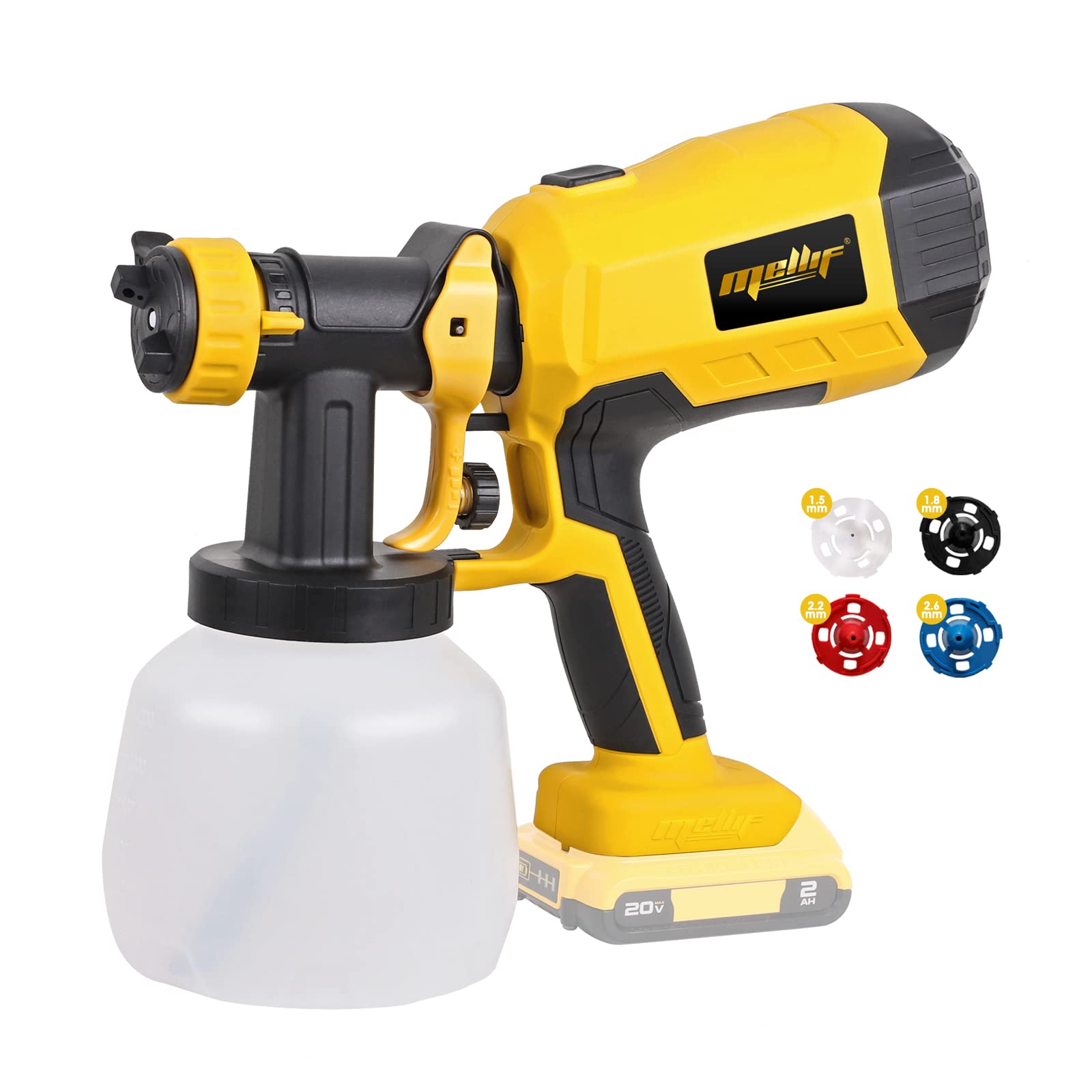
 Paint Sprayer Reviews & Buying Guides1 day ago
Paint Sprayer Reviews & Buying Guides1 day agoDEWALT 20V Cordless Paint Sprayer Review (2023)
-
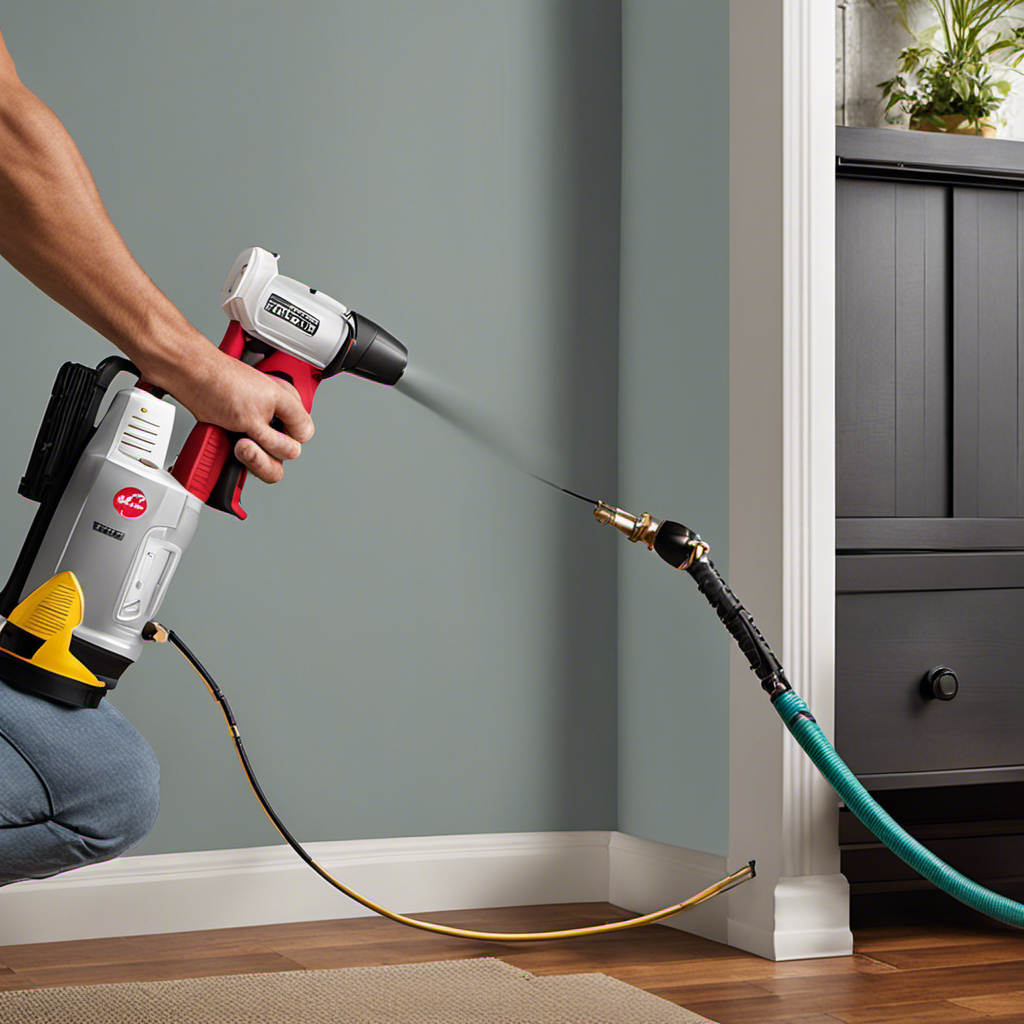
 Paint Sprayer Reviews & Buying Guides3 months ago
Paint Sprayer Reviews & Buying Guides3 months agoCalculating Paint Needs for Airless Sprayer: Coverage, Surfaces, and Tips (2023)
-
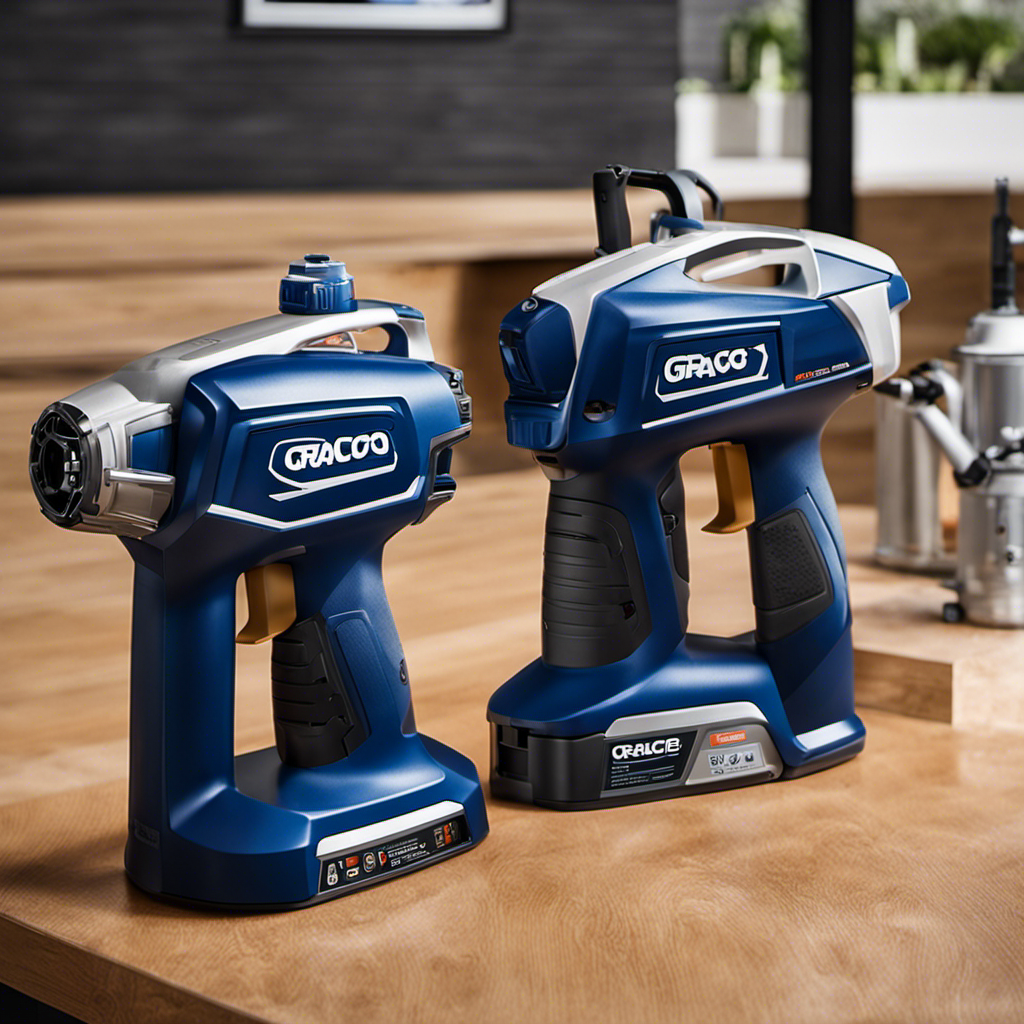
 Paint Sprayer Reviews & Buying Guides3 months ago
Paint Sprayer Reviews & Buying Guides3 months agoGraco Truecoat 360: DSP Vs VSP – a Comparison of Power and Portability (2023)
-

 How-To & Tips3 months ago
How-To & Tips3 months agoMastering the Avanti Airless Paint Sprayer: Tips and Techniques
-
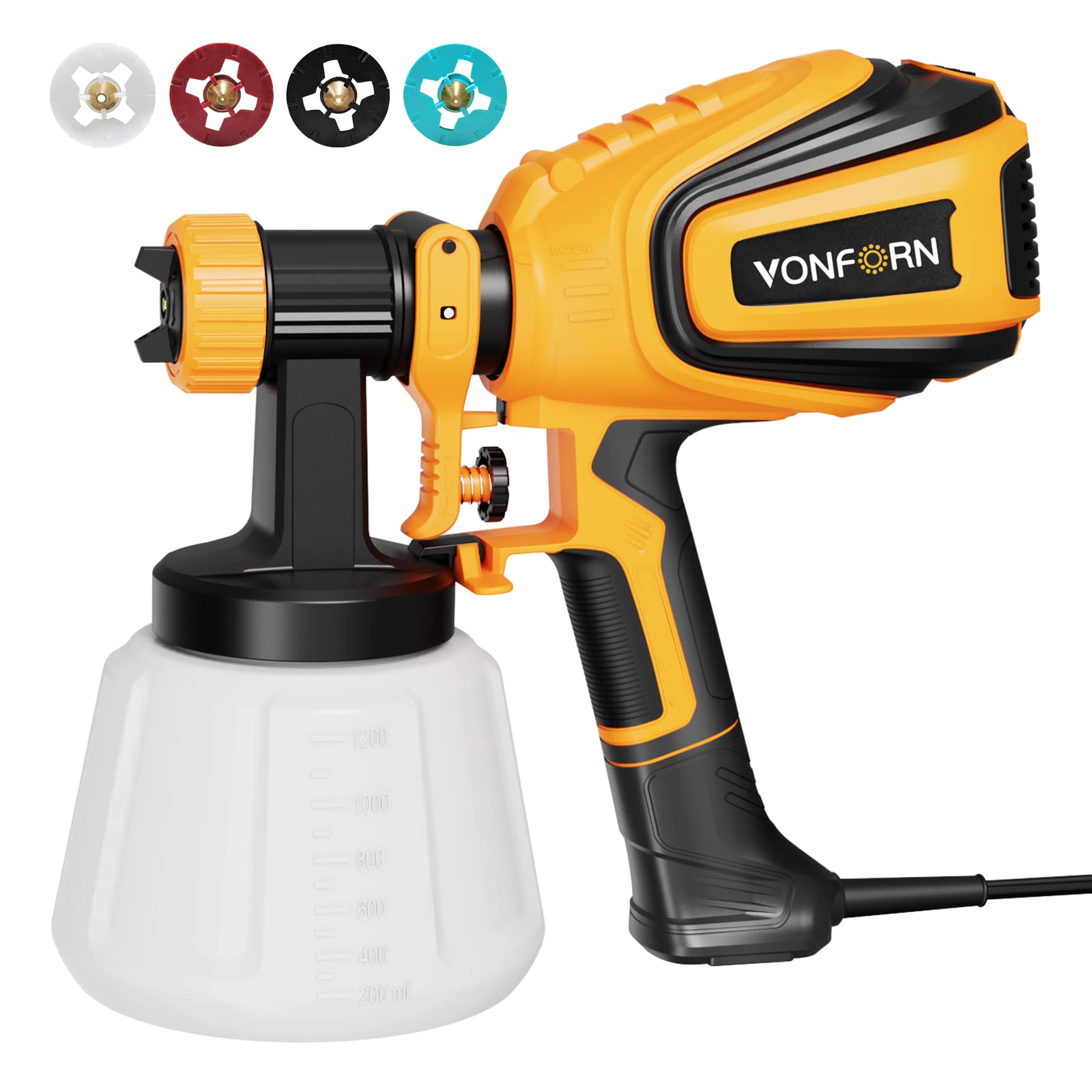
 Paint Sprayer Reviews & Buying Guides2 days ago
Paint Sprayer Reviews & Buying Guides2 days agoVONFORN Paint Sprayer Review: High Performance HVLP Spray Gun (2023)
-

 Paint Sprayer Reviews & Buying Guides1 week ago
Paint Sprayer Reviews & Buying Guides1 week agoSpray Painting Hazards: Safety Measures and Compliance (2023)
-
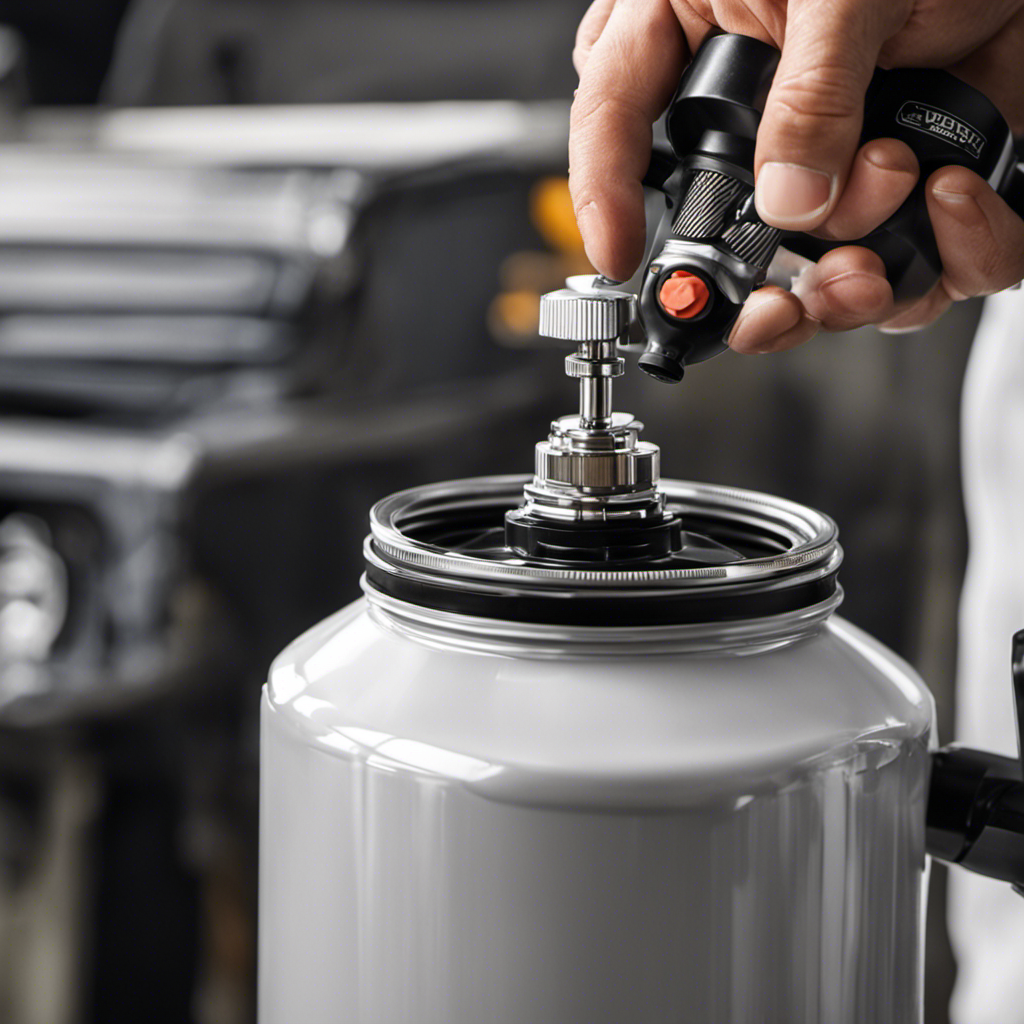
 Paint Sprayers FAQs3 days ago
Paint Sprayers FAQs3 days agoHow to Adjust Pressure on Airless Paint Sprayer
-

 Paint Sprayer Maintenance and Troubleshooting3 months ago
Paint Sprayer Maintenance and Troubleshooting3 months agoWhy Using the Right Oil Matters for Your Airless Paint Sprayer
